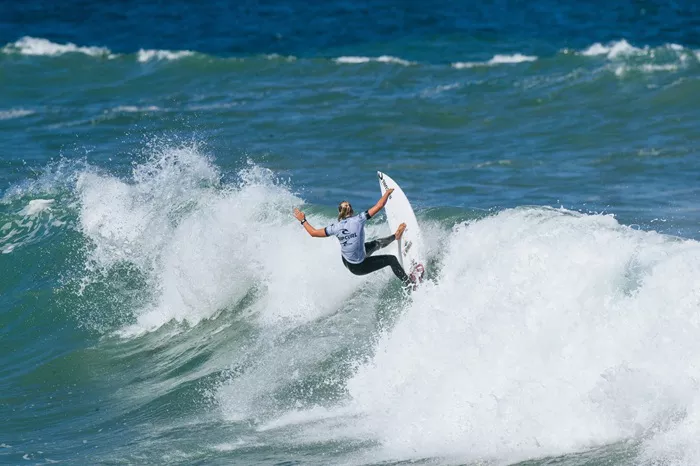ells Beach, located in Torquay, Australia, is not just a renowned surfing destination—it is the iconic venue that every serious surfer dreams of conquering. With its steep red clay cliffs forming a natural amphitheater, the setting for the Rip Curl Pro is as legendary as the event itself. The beach attracts the finest athletes in the sport each Easter, when crowds of passionate fans descend upon the Colosseum of Australian surfing. Here’s why the Rip Curl Pro Bells Beach remains at the pinnacle of competitive surfing.
1. A Legacy Built on History
Torquay is situated on the traditional lands of the Wadawurrung People of the Kulin Nation. The area’s Indigenous name for Bells Beach, Djarrak, meaning “bended arm,” describes the distinctive curvature of the cliffs surrounding the beach. The origins of surfing at Bells trace back to the 1950s when the Torquay Surf Lifesaving Club first ventured to the beach, and local surfer Joe Sweeney made it accessible for others by extending the trail in 1960. By 1961, the first surfing competition was held here—the Bells Beach Easter Rally. It quickly became a fixture on the surfing calendar, officially joining the world circuit in 1973 as the Rip Curl Pro.
This rich history has cemented Bells as a surfing mecca, where champions like Gail Couper, Michael Peterson, and more recently, Kelly Slater and Carissa Moore, have etched their names into the history books. The event is not just a contest; it’s a celebration of surf culture, offering a unique blend of sporting excellence and community spirit.
2. The Winners’ Circle: An Exclusive Club
Bells Beach is more than a competition—it’s an exclusive club for surfing legends. Since its inception in 1973, only 53 surfers have won the prestigious Rip Curl Pro, making it a coveted achievement in the sport. Australian surfers have traditionally dominated, but international stars have also left their mark. Notable winners include Mick Fanning, Stephanie Gilmore, and Carissa Moore, with Gail Couper holding the record for the most victories—10 in total.
The event’s history includes memorable moments, such as Simon Anderson’s 1981 win, which solidified his innovative thruster design and ended the twin-fin era. For many, Bells is the pinnacle of competitive surfing, a place where the world’s best showcase their mastery of the sport. The youngest-ever winner, 16-year-old Nick Wood in 1987, epitomizes the level of talent required to win here. More recently, Ethan Ewing rang the Bell in 2023, marking the 40th anniversary of his mother Helen Lambert’s own win at Bells—a full-circle moment that underscored the event’s deep personal significance for many competitors.
3. Torquay: The Spiritual Home of Australian Surfing
Torquay is more than a destination; it is the birthplace of the Australian surf industry. The town is home to iconic surf brands like Rip Curl and Quiksilver, both founded in 1969, and has since grown into a hub for surf culture. The streets of Torquay are lined with surf shops, cafés, and the Australian National Surfing Museum, reflecting the area’s deep connection to the sport. Beyond the retail outlets, the town has maintained a strong sense of community, with local surfers continuing to shape the future of the sport in their backyard sheds.
The annual arrival of the Championship Tour transforms Torquay into a vibrant festival, filled with surf-related events, art shows, and industry parties. It’s where the past, present, and future of surfing meet—on the cliffs above Bells Beach.
4. A True Test of Style, Power, and Technique
Bells Beach may not feature the high-flying aerials and barreling waves of other Championship Tour stops, but that’s part of its allure. The wave at Bells demands a different kind of surfing mastery—long, powerful turns, fluidity, and the ability to maintain speed on a long, winding right-hand point break. To succeed at Bells, surfers must showcase precision, strength, and technical skill.
The conditions here are notoriously challenging, with unpredictable sets and frigid Southern Ocean waters. Surfers like Mick Fanning, Jordy Smith, and Stephanie Gilmore have thrived in these conditions, thanks to their ability to harness the raw power of the waves. Bells isn’t just a wave to ride; it’s a wave that tests a surfer’s fundamentals—rail work, positioning, and commitment to each turn. It’s the ultimate proving ground for the sport’s elite athletes.
5. Torquay’s Vibrant Surf Culture
While the surfing competition at Bells Beach is the main event, Torquay’s surf culture extends far beyond the beach. The town comes alive during the Easter long weekend, with everything from live music to surf demos, local art shows, and industry parties. For fans and participants alike, the Rip Curl Pro is as much about the community experience as it is about the competition. The electric atmosphere makes Torquay a must-visit destination for surfing enthusiasts.
As the waves roll in from the Southern Ocean, Bells Beach offers one of the most scenic and challenging settings for competitive surfing. The wave’s long rides are perfect for showcasing the strength and precision that define a true surfing champion. With its rich history, powerful waves, and vibrant surf culture, Bells Beach remains a sacred destination for the surfing world—a place where legends are made.
Conclusion
The Rip Curl Pro Bells Beach is not just another event on the Championship Tour—it is a symbol of the sport’s enduring legacy and a celebration of the surfers who continue to push the boundaries of what’s possible. Whether you’re watching from the cliffs above or tuning in from home, it’s clear that Bells Beach will continue to hold a special place in the hearts of surfers and fans alike.

